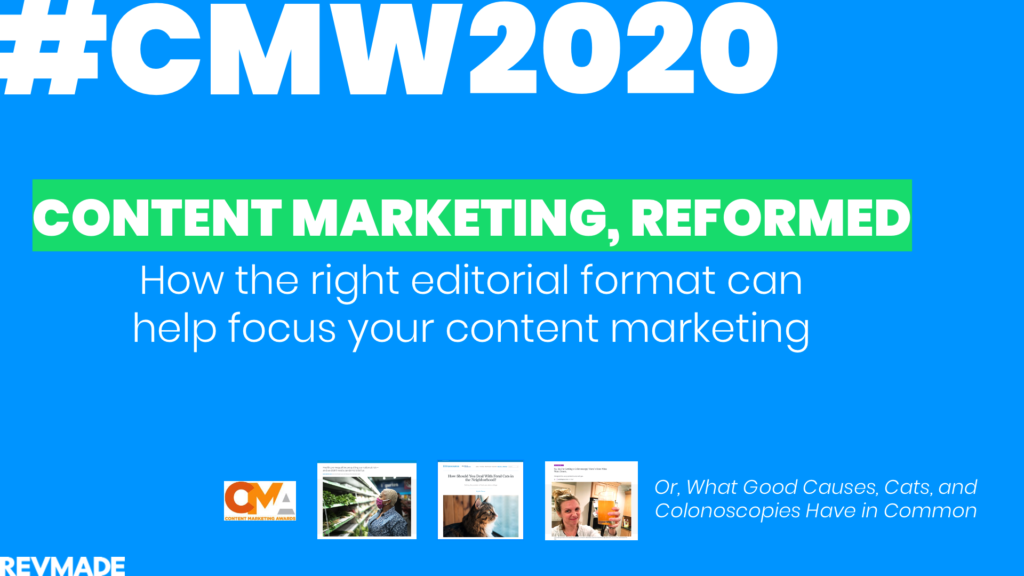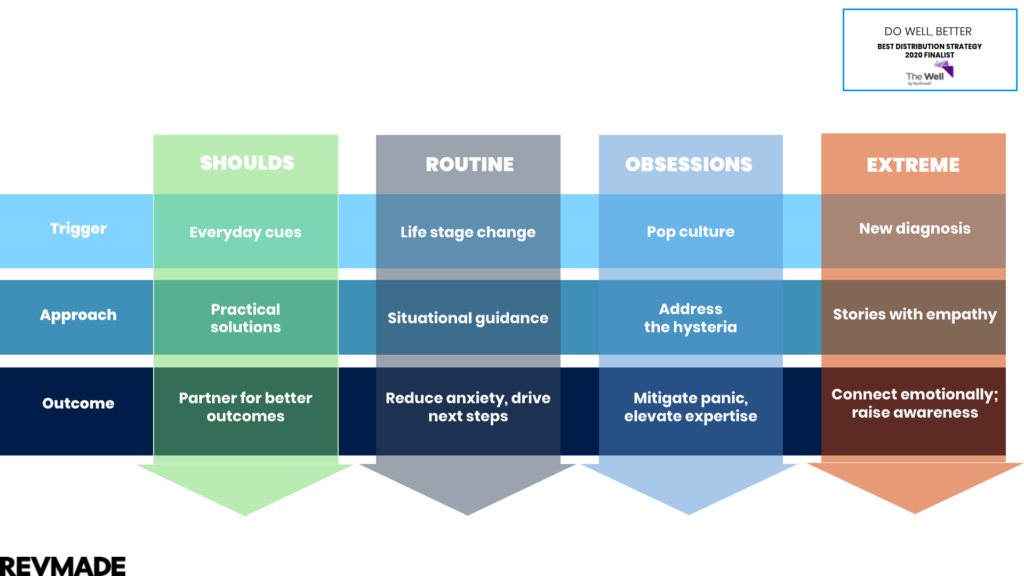What the best content marketing programs have in common
A framework to help guide brands toward more relevant content marketingThere’s no shortage of marketers investing in content marketing (research shows about 9 out of 10 do). This explosion in content creation has created a new challenge for marketers: How can I make sure my audience targets are actually engaging with my content?
This challenge is proving significantly difficult. Audiences are in control of what they pay attention to arguably more than any time in history; factor in market noise, aggressive competition for attention and the diversions of massive world events, and the focus of your audience seems even more elusive. It’s a major reason why only 1 out of 10 marketers reports they can map ROI to their content marketing efforts.
The good news: There are ways to get this right, and when brands can produce something their audience cares about over time, the attention they earn is far more valuable than the attention they buy. (An analysis for one of our clients recently revealed that its conversion percentage doubles when audiences are organically reaching content that’s been created to help them vs. paid media efforts).
Our company has developed a framework to identify gaps in target audience needs and their current media diet — and deliver information products that earn quality attention. Here’s a quick deconstruction of how we get started with that process.
(Quick aside: Today, our Chief Content Officer, Andrew Hanelly, is leading a session at the Content Marketing World 2020 conference on this topic — we’d love to see you join if you’re attending the conference!).

Focus
Is this content doing a job? Does it save users time through curation and tools? Does it simplify tough decisions with expert analysis? Does it inspire them to change their status quo?
To determine a focus for our content, we always start in the same place: Audience immersion. The only way we can produce good outcomes is to understand everything about our targets, including these three critical areas:
-
The context in which they’re living. What major events are taking place around them that could change their needs for information, services and products? For our B2B clients, this could look like some kind of business disruption — a prime time to launch a content strategy that helps executives navigate it. For B2C clients, the pandemic is a great example of how information needs have been completely upended, from healthcare to CPG.
-
Their existing media diet. What are they currently reading, watching and engaging with outside of pure industry content? We leverage an extensive data collection process to look at existing media reliance and get a sense of the type of content that’s currently earning attention for multiple reasons. One, it gives us a sense for what matters to them information-wise. Two, it gives us a sense of what type of media vehicles they prefer (social posts vs. newsletters vs. something else). Third, and perhaps most importantly, it gives us a sense of the formats that are attracting them (short-form with bullets, image- and illustration-heavy; long-form, etc.).
- The moments of relevance where they demonstrate a genuine interest, pain point or need. Or, as my colleague Joshua Lasky recently put it, “Instead of relying just on personas, we advise clients to “market to moments” — to identify the moments and contexts where their brand and content can be the most relevant. This reorientation ensures that key decisions will influence the moments at which an audience is likely to respond to outreach.” For an example, see the chart of “moments” we created for a health and wellness brand focused on serving the community they sell to.
Format
Once you’ve determined a focus, you need to find the format that will be the best delivery system for your content marketing message. Formats are fantastic ways to form a bond between you and your audience, where they know what to expect from you, and you know what to deliver to them. It’s the best way to keep your content strategy from going off the rails.
For example, we’ve developed:
-
Advice columns when we knew search traffic was the highest priority, we needed to deliver answers quickly, honestly and empathetically;
-
First person “what to expect” essays on medical procedures, when we knew that objections to necessary care usually stem from fear of the unknown;
-
Predictive, analysis-driven insider newsletters when we knew loyalty was critical, and we needed to attract busy executives.
Landing on a repeating format helps build reader loyalty. We focus on creating franchises that will bring back consumers week after week, and can stem into events and other types of activations.
Feedback
This may seem like the most obvious part — “now they are going to talk about analytics” — but I think it actually might be the most critical. Integrating feedback needs to be done in a specific way that actually lends itself to experimentation and outcomes vs. endless permutations, or, overwhelmed by feedback, doing absolutely nothing.
Here’s how we integrate feedback:
-
We infuse all brainstorming sessions for new content ideas with multiple data sources, including internal (for most projects sales is critical here, and must be included) and audience (search queries, social discussions, content analytics, call center feedback, ratings, etc.) to make sure we’re as relevant as possible when we first assign content to be created.
-
We develop pilot programs, with defined scopes, start and end dates, to test new products, audience segments or formats. We’ll of course keep something that’s high performing, but we don’t expect that every single thing will be.
-
We set guardrails for the analytics we care about — i.e. conversion, engagement — and obsessively focus on KPI movement. We involve the entire team in monthly and quarterly reviews, ensuring we’re adhering to the business-driving mission of the content. R
If you’re looking for ways to better focus your content marketing efforts let us know and we’d be happy to talk more.
Subscribe
Get our weekly newsletter for tips on how to drive better content marketing performance.
For a regular stream of ideas, research and links we find helpful. And of course, to say hi!

